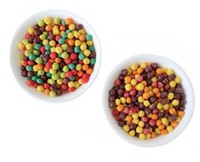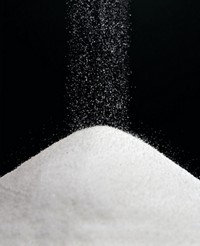Advertisement
Grab your lab coat. Let's get started
Welcome!
Welcome!
Create an account below to get 6 C&EN articles per month, receive newsletters and more - all free.
It seems this is your first time logging in online. Please enter the following information to continue.
As an ACS member you automatically get access to this site. All we need is few more details to create your reading experience.
Not you? Sign in with a different account.
Not you? Sign in with a different account.
ERROR 1
ERROR 1
ERROR 2
ERROR 2
ERROR 2
ERROR 2
ERROR 2
Password and Confirm password must match.
If you have an ACS member number, please enter it here so we can link this account to your membership. (optional)
ERROR 2
ACS values your privacy. By submitting your information, you are gaining access to C&EN and subscribing to our weekly newsletter. We use the information you provide to make your reading experience better, and we will never sell your data to third party members.
Environment
A Tale Of Sweet Nothings
An exploration of the long history and varying public perceptions of artificial sweeteners
by Audra J. Wolfe
November 15, 2010
| A version of this story appeared in
Volume 88, Issue 46

Between March and December 1977, Americans sent more than 1 million letters to Congress, the Food & Drug Administration, and President Jimmy Carter protesting FDA’s incipient ban on saccharin. Reacting to news that the artificial sweetener could increase the incidence of cancer in rats, Acting FDA Commissioner Sherwin Gardner had announced that saccharin would be taken off the market at the start of the new year. But for many of these correspondents, the threat of losing immediate access to their Diet Pepsi, Tab, and Weight Watchers’ puddings greatly outweighed the potential long-term health costs of saccharin. These loyal consumers credited saccharin with not only their weight loss, but also their happiness. In the end, faced with pleas from constituents like Virginia Tamarin, who wrote that “life is not worth living without diet foods,” the Senate shelved the ban.
Tamarin’s letter is quoted in Carolyn de la Peña’s book, “Empty Pleasures: The Story of Artificial Sweeteners from Saccharin to Splenda.” The book is an attempt to explain the enduring appeal of sugar substitutes in the face of nearly constant concerns about their safety. As of 2007, almost two-thirds of Americans reported regular consumption of such products as Sweet’N Low (saccharin), NutraSweet (aspartame), or Splenda (sucralose); the combined annual global market for these three artificial sweeteners is estimated at more than $3 billion.
Yet a generation after the Senate called off the saccharin ban, artificial sweeteners have not escaped their critics. Criticism of artificial sweeteners once came largely from consumer advocates and alternative health practitioners who claimed that government regulators were ignoring the perils of these substances in favor of industrial profits. Now, the loudest voices belong to food activists in the vein of best-selling author Michael Pollan. Diet foods once offered the promise of allowing Americans to reduce their waistlines without reducing their consumption; now they stand in for the worst of what Pollan has called “edible food-like substances” in his book “In Defense of Food.”
Unbeknown to today’s artificial sweetener critics, de la Peña shows, they are echoing an argument made more than a century ago. Saccharin, the original artificial sweetener, first came to U.S. consumers’ attention as an “adulterant” that stole nutritional content from otherwise supposedly healthy foods, like ginger ale. Soda manufacturers began substituting saccharin for sugar soon after the coal-tar derivative’s discovery in the late 19th century. It was cheap, it was sweet, and—unlike sugar—it was free from market fluctuations associated with political instability.
In the days before labeling requirements, few manufacturers bothered to notify their customers of the substitution. In 1911, FDA Commissioner Harvey W. Wiley believed saccharin to be an impurity, categorizing it along with alum and sodium benzoate as a substance that provided color or flavor without adding nutritional benefit. Even so, its dual use as a medically useful product for diabetics made it difficult for early regulators to categorize it. President Theodore Roosevelt’s own doctor recommended that he consume saccharin daily. Despite Roosevelt’s objections, early-20th-century regulators agreed that the substitution of saccharin for sugar devalued food products by lowering their “fuel value.” The very thing that would later make artificially sweetened foods desirable—their lack of calories—marked them as fraudulent in an era when sugar consumption was praised for its nutritional value.

It was during the sugar shortages of World War II, de la Peña argues, that U.S. housewives came to discover the virtues of saccharin. Official recommendations from home economists and food-safety experts explicitly warned against using saccharin as a sugar substitute, pointing especially to its bitterness in cooked foods. In sugar’s place, they recommended corn syrup, molasses, or maple syrup. Nevertheless, leading saccharin manufacturers, including Monsanto, E. R. Squibb, and Parke-Davis & Co., reported soaring demand for their product shortly after the beginning of rationing. The unavailability of sugar, combined with a growing interest in dieting and weight loss, encouraged women to experiment with a product officially marketed only to diabetics.
Here de la Peña’s substantial skills as a social and cultural historian are on fine display as she uncovers evidence for such covert usage not only in specialty diet books and queries directed to the “ladies’ pages,” but also in more unexpected sources, such as the popularity of decorative, bird-shaped dispensers for saccharin pills. Using saccharin became a way for women to exercise control and display their sophistication.
The practice of using artificial sweeteners was made substantially easier in 1951, when Abbott Laboratories received FDA approval to market Sucaryl, a sodium cyclamate that dissolved easily and lacked saccharin’s bitterness. Throughout the 1950s and 1960s, both Sucaryl and saccharin increasingly found their way into American homes, whether in the form of prepackaged diet foods or as individual pills to sweeten reduced-sugar desserts. Often, as in the author’s illuminating discussion of the relationship between Abbott Laboratories and the California Canners & Growers (CCG) cooperative, food manufacturers looked to their partners in the chemical industry for product ideas, technical expertise, and a sense of chemical camaraderie.
In CCG’s case, this partnership turned disastrous when Abbott’s assurances of safety proved no match for a series of studies that demonstrated a clear link between cyclamate consumption and bladder cancer in rats. FDA’s October 1968 announcement that Sucaryl would be banned left CCG holding more than 3 million cans of Diet Delight brand California fruit. The loss proved insurmountable for CCG, and the cooperative eventually filed for bankruptcy in 1983.
Women diet entrepreneurs, relying as they did on a different set of marketing and production techniques, found more lasting success in brands such as Jean Nidetch’s Weight Watchers program, which focused on the psychology of desire rather than the cult of the lab. Their success, de la Peña argues, was tied to the idea of food without calories rather than to a technological relationship with a specific artificial sweetener producer.
In de la Peña’s analysis, the success of Weight Watchers and CCG’s bankruptcy must be understood in part through changing relationships among gender, technology, expertise, and status in late-20th-century America. The diet entrepreneurs naturalized artificial sweeteners by defining them as “legal” or “sinless” treats in a world of dangerous, sugar-filled foods. The “pleasure” in a diet chocolate soda came not from the presence of a particular brand of artificial sweetener but rather from the absence of calories.
CCG’s managers, on the other hand, appear in her portrayal to have been seduced by the glamour of science. Basking in the undivided attention of Abbott’s highly educated accounts men, members of the California agricultural cooperatives soon laced more than half of their product with Sucaryl. In de la Peña’s interpretation, signing on to Sucaryl allowed the men of CCG to join Abbott’s ranks on the forefront of scientific innovation, giving them an opportunity to “transcend the limits of what they had come to define as possible.” Certainly, Diet Delight’s market success exceeded the bounds of what CCG’s leadership thought possible—at its height, the brand outsold Dole and Libby. Whether this temporary success and subsequent financial disaster add up to the “spiritual” experience the author claims it to be is more questionable.
This incident is one of several where the author’s interpretation stretches the evidence. In part, this reflects the fact that so much of the mundane, day-to-day work of making and marketing chemicals remains opaque and mysterious to historians. Open corporate archives are few and far between; in de la Peña’s case, it’s telling that this particular story is based on CCG’s papers, not Abbott’s. For outsiders, “Empty Pleasures” offers a too rare glimpse of how the business of chemistry actually works; insiders may be curious to see how historians explain the industry to one another.
Whether inspired by a desire for status, control, profit, or gender equity, the entrepreneurs of artificial sweeteners deserve credit for a shared oddity of American life: To lose weight, we eat more. Despite the recent frenzy of public health advocacy surrounding the obesity epidemic, Americans on a diet are more likely to reach for a sugar-free (that is, artificially sweetened) yogurt than for an apple, or to reach for a diet soda instead of water. Ultimately, “Empty Pleasures” argues, we must change the way we live if we want to change the way we eat.




Join the conversation
Contact the reporter
Submit a Letter to the Editor for publication
Engage with us on Twitter